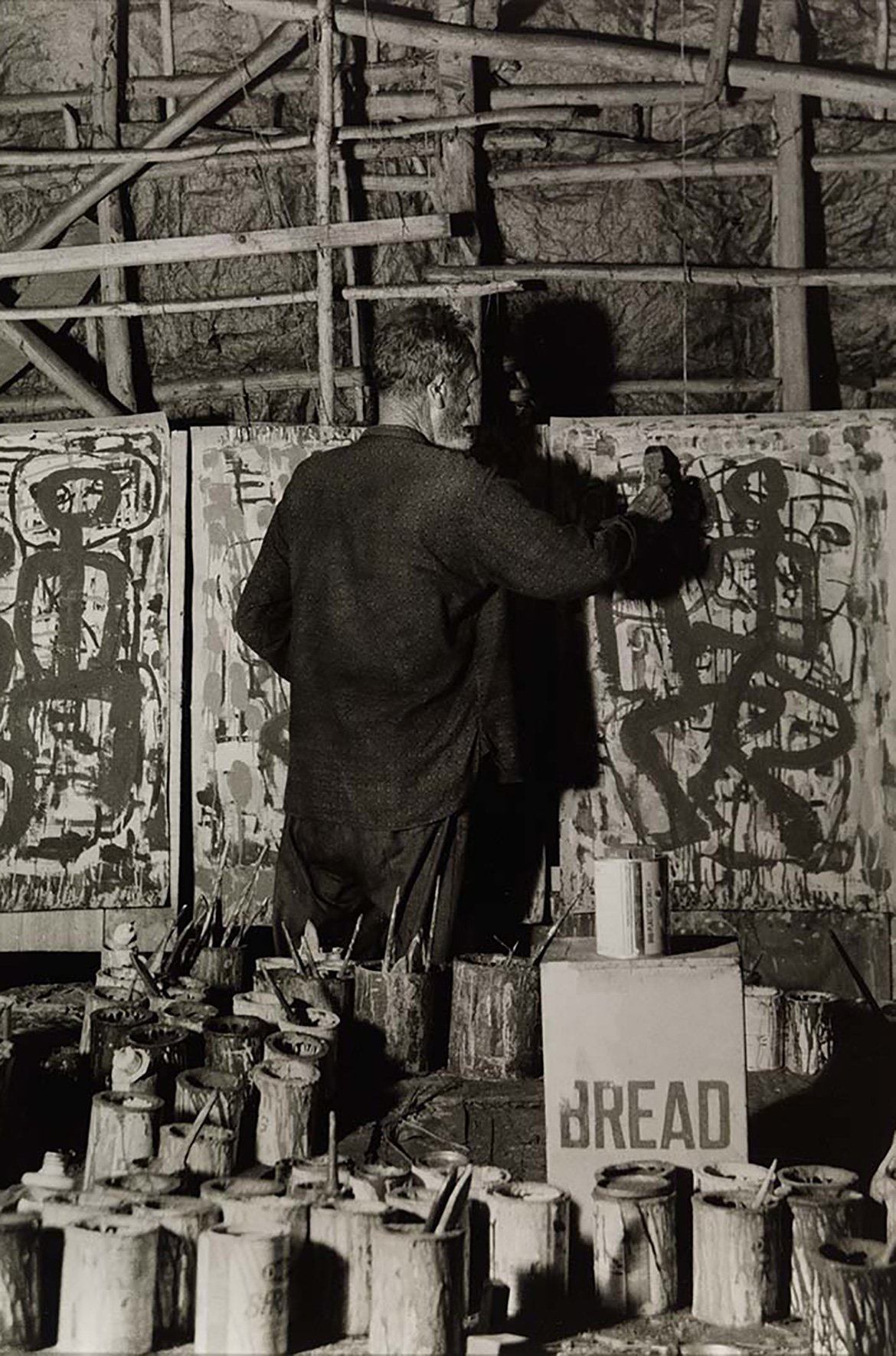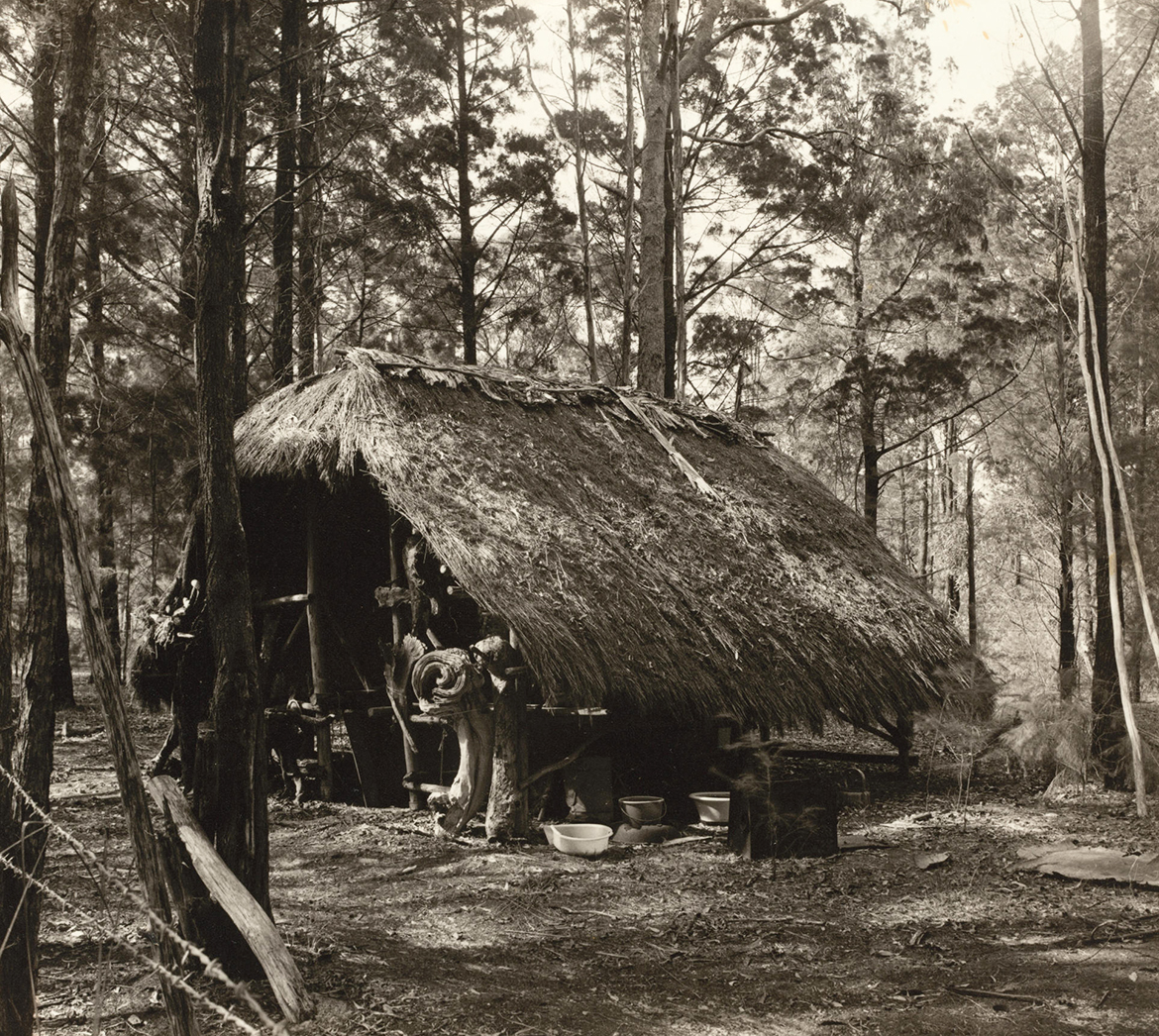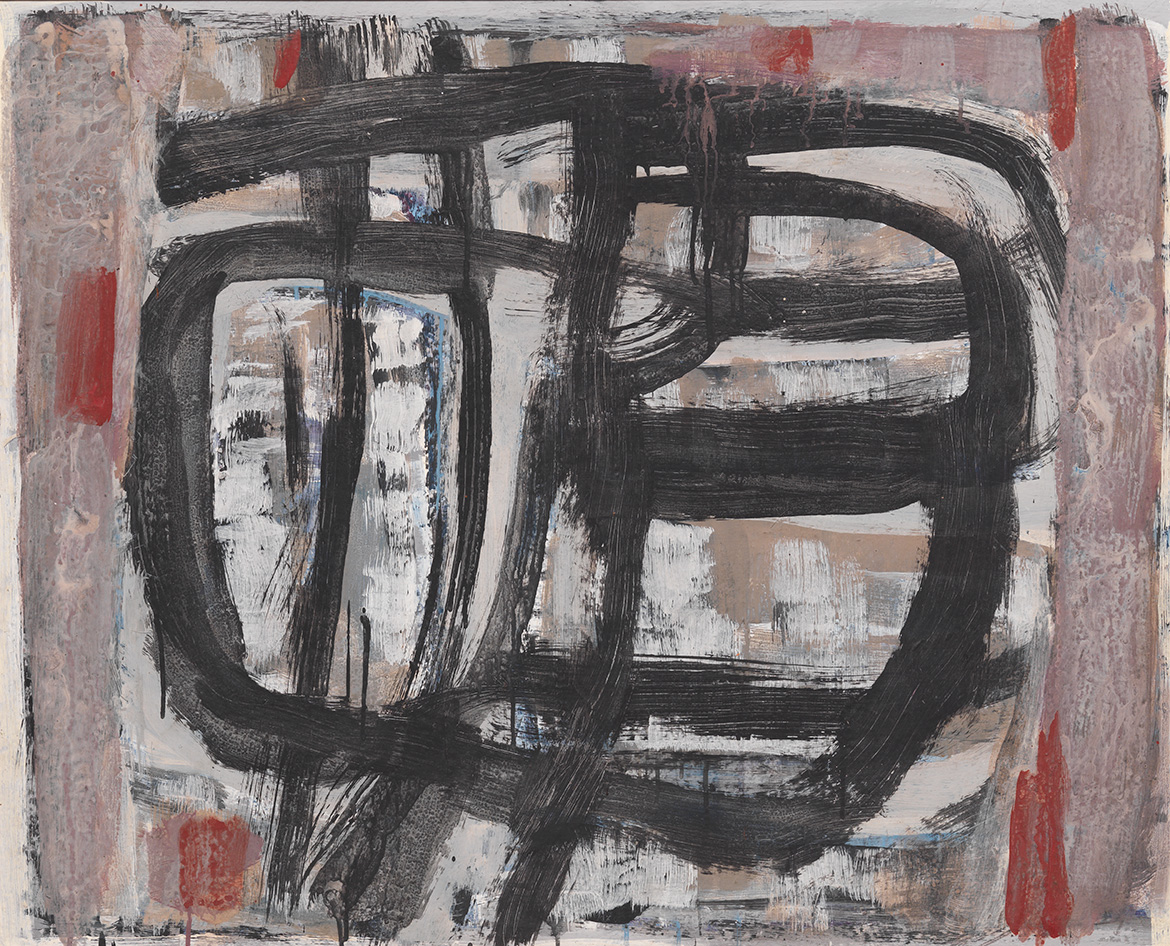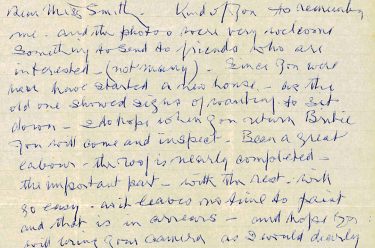The image of the artist working in his Bribie Island hut was taken late in Ian Fairweather’s career. Due to ill health he had virtually stopped painting by 1972. This image (illustrated), plus images taken in the 1960s show the artist working with many open tins of commercially made house paints. Paintings were either worked horizontally on a table or, as in this image, vertically on a home-made easel. The larger, late works from 1958 are characterised by a myriad of paint drips showing through in the underlayers, with drier brushstrokes over the top. The drips are likely to be from brushing on a fluid medium while the works are on an easel. You can see the residue of drips along the bottom edge of the easel in this photograph.
Ian Fairweather in his studio on Bribie Island 1972

Ian Fairweather in his studio on Bribie Island 1966

Bribie Island hut 1966

How was Ian Fairweather’s choice of materials connected to Australian paint industry developments in the 1950s and 1960s? In an interview with oral historian Hazel de Berg in 1963 (Ian Fairweather interviewed by Hazel de Berg in 1963 and 1965, in the Hazel de Berg collection [sound recording], held at the National Library of Australia), Fairweather revealed that he had become allergic to oil paint in 1939, and did not use oils after this time. Murray Bail in his book Fairweather (2009, Murdoch Books) theorises that Fairweather only started painting his late larger paintings from 1958 — almost 20 years later — when water based synthetic polymer paint dispersions were available to him. While on Bribie Island, he bought many of his painting materials from the local hardware store. Recent research by conservators at QAGOMA has been to look at the question of what painting materials were available to Ian Fairweather while he was on Bribie Island.
Ian Fairweather ‘Composition I’ 1962

Anne Carter is Conservator, Paintings at QAGOMA
Featured image detail: Ian Fairweather Composition I 1962
#QAGOMA


I am fascinated with how these works are conserved. The materials used are so fragile and I wouldn’t have throught cardboard would be particularly resilient to light and movement. Great exhibition.